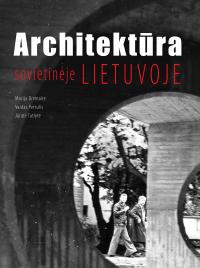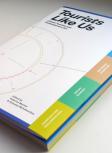

Giving a sense to the architectural legacy of the second half of the XX century in today’s cities is one of the most complex urban planning and heritage protection issues. Although ICOMOS stated in its recommendations back in 1995 that conventional preservation procedures were applicable to the XX century heritage, these structures differ from those of previous eras in terms of quantity, typology and construction and material quality. The issue of the value of XX century architecture is even more complicated in the post-Soviet context, where the legacy is deeply related with controversial political context. Therefore the book is aimed to foster the ongoing discussion about the legacy of the Soviet Lithuanian architecture. Authors sought to present a flexible and manifold text open to further interpretations and inspiring discussions, which would encourage interest in the architectural culture, ideas and legacy of this period. A multi-faceted approach to the selected subject manifests in the structure of the publication.
The introductory part of the book is dedicated to one of the key issues concerning the legacy of the second half of the XX century in the post-Soviet context – the connection between architecture and ideology. The second part identifies and separately discusses three most important stylistic tendencies related to particular periods of the era, namely “socialist realism” of the Stalinist period, a clear shift towards architectural industrialization during Nikita Khrushchev’s rule, named as socialist modernism and, finally, the transformations of socialist modernism, which more or less echoed the criticism of modernism prevailing in the West. The third part of the book follows with the wide range of the problematic questions related with soviet architectural developments: soviet industrialisation and urbanisation, leisure and recreational architecture and the problematic relationship between a human and the material environment in the Soviet daily life. The last, fourth, part provides a concentrated catalogue of 100 buildings, which is a certain kaleidoscope of Soviet Lithuanian architecture. There the reader will find the most characteristic and most important objects, types, authors and unique building stories of that time.
Release date: 2012
Pages: 412
Format: 21,5 x 27 cm
Covers: paperback
Circulation: 500
ISBN 978-609-447-024-0
Price: Sold Out
The book chapters describe and make sense of the process of city/industry disentanglements since the beginning of the decommissioning of the Ignalina Nuclear Power Plant, Visaginas core enterprise. The main spatial site that framed our work on Visaginas knowledge infrastructures relevant in 2015-2020 is the town’s public library as potentially a strategic institution and facility in the process of the disconnection between the INPP and the town.
This book opens up a new field of discussion at the crossroads between contemporary art and critical tourism.
Tel. 8 5 279 10 15 (direkcija)
PVM mokėtojo kodas LT 100003222911
AB bankas „Swedbank“
A.s. LT35 7300 0100 0245 5757



